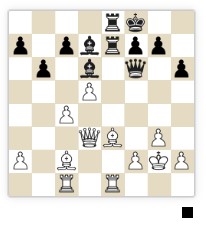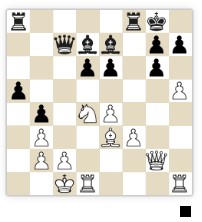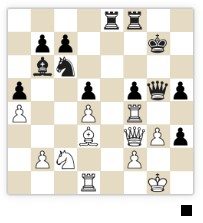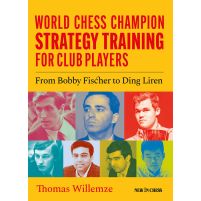For his “ChessCoach Andras” Youtube channel, International Master Andras Toth reviewed “World Chess Champion Strategy for Club Players” by our author Thomas Willemze. In a highly positive review, he highlighted the book’s accessible structure, carefully selected material, and quality analysis. The book, which focuses exclusively on World Champion games, takes the reader through their thought processes at these games’ most critical moments.
About the book’s structure, Toth praises the now-common use of flash cards as a learning tool at the end of each chapter, as well as the use of fragmentation to draw multiple lessons from the same game.
“The structure is really clever: many a time you will find the same game broken down into multiple diagrams, so you are going from one challenge to the next. In this way, and many other ways, the book is marvelously well-structured.“
In exercise 28, takes a detailed look at Kamsky – Karpov, taken from the sixth game of their 1996 World Championship match.
 While the body of the Karpov-chapter provides detailed analysis of the move 26…Bg4!, the manoeuvre is also highlighted in the flashcards at the end, illustrating the book’s cohesive structure. In addition to its structured approach, Toth also points out the quality and accessibility of the chosen material. Stressing that, in his own coaching practice, Toth wouldn’t usually recommend study of conservative players like Karpov, he praises the way Willemze makes the former World Champion’s playing style accessible with fresh analysis, while maintaining focus on the highest quality of games.
While the body of the Karpov-chapter provides detailed analysis of the move 26…Bg4!, the manoeuvre is also highlighted in the flashcards at the end, illustrating the book’s cohesive structure. In addition to its structured approach, Toth also points out the quality and accessibility of the chosen material. Stressing that, in his own coaching practice, Toth wouldn’t usually recommend study of conservative players like Karpov, he praises the way Willemze makes the former World Champion’s playing style accessible with fresh analysis, while maintaining focus on the highest quality of games.
“What I particularly like about the selection of the material is that it’s relevant, it’s new. (…) It’s great to see new books coming out that rediscuss old themes while using far more adequate examples. And this guy does it really well.”
We see another example of the book’s quality analysis in exercise 15, which consists of three parts.
 This game between Fischer and Larsen has often been studied, but the analysis rarely features such laser-focus on one critical moment. Before looking at the move 20…g5 as it occurred in the game, Willemze dedicates a substantial section of the analysis to the alternatives 20…a4, 20…e5 and 20…h6, explaining in detail why none of these moves are viable options.
This game between Fischer and Larsen has often been studied, but the analysis rarely features such laser-focus on one critical moment. Before looking at the move 20…g5 as it occurred in the game, Willemze dedicates a substantial section of the analysis to the alternatives 20…a4, 20…e5 and 20…h6, explaining in detail why none of these moves are viable options.
While the analysis throughout the book is exhaustive, Toth stresses that this never comes at the expense of its accessibility. Its fragmented approach, with “bite-size examples” that recur in flashcards at the end of each chapter, makes it highly penetrable for players at the club level.
“If you are a player looking to improve with only fifteen minutes of free time, you pick it up, there is a diagram, and there is your fifteen minutes of learning.”
Taking one last example, this time from our current World Champion, the book also takes a moment to marvel at the beauty of the game. Exercise 96, taken from Yifan – Ding, illustrates the latter’s exceptional ability with the long-range pieces with a particularly pretty example.
 But, while 27…Re4! is not only an attractive move, it’s also very strong. It is this balance between quality and accessibility that best characterizes Toth’s praise.
But, while 27…Re4! is not only an attractive move, it’s also very strong. It is this balance between quality and accessibility that best characterizes Toth’s praise.
“Guaranteed quality entertainment and meaningful time spent on chess improvement. Five out of five as far as I’m concerned.”
Check out the full review on YouTube:
